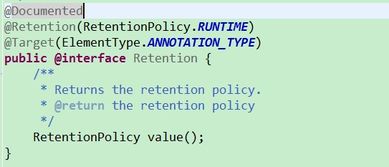
Bit Operations in Java: A Comprehensive Guide
Bit operations are a fundamental concept in computer science and programming. They involve manipulating individual bits within binary numbers. In Java, bit operations are essential for optimizing performance and achieving complex tasks efficiently. This article will delve into the various bit operations available in Java, their syntax, and practical applications.
Bitwise AND (&)

The bitwise AND operation compares each bit of two numbers and returns a new number where the bits are set to 1 only if both corresponding bits of the operands are 1.
For example:
int a = 12; // 1100 in binaryint b = 15; // 1111 in binaryint result = a & b; // 1100 in binary, which is 12In this example, the bitwise AND operation results in 12 because the bits in both numbers are 1 in the same positions.
Bitwise OR (|)

The bitwise OR operation compares each bit of two numbers and returns a new number where the bits are set to 1 if at least one of the corresponding bits of the operands is 1.
For example:
int a = 12; // 1100 in binaryint b = 15; // 1111 in binaryint result = a | b; // 1111 in binary, which is 15In this example, the bitwise OR operation results in 15 because at least one of the bits in the corresponding positions of the operands is 1.
Bitwise XOR (^)

The bitwise XOR operation compares each bit of two numbers and returns a new number where the bits are set to 1 if the corresponding bits of the operands are different.
For example:
int a = 12; // 1100 in binaryint b = 15; // 1111 in binaryint result = a ^ b; // 0011 in binary, which is 3In this example, the bitwise XOR operation results in 3 because the bits in the corresponding positions of the operands are different.
Bitwise NOT (~)
The bitwise NOT operation inverts each bit of a number. If a bit is 0, it becomes 1, and if a bit is 1, it becomes 0.
For example:
int a = 12; // 1100 in binaryint result = ~a; // 0011 in binary, which is -13 in two's complement representationIn this example, the bitwise NOT operation inverts the bits of 12, resulting in -13 in two’s complement representation.
Bitwise Left Shift (<<)
The bitwise left shift operation shifts the bits of a number to the left by a specified number of positions. The leftmost bit is discarded, and a 0 is inserted on the rightmost side.
For example:
int a = 12; // 1100 in binaryint result = a << 2; // 110000 in binary, which is 48In this example, the bitwise left shift operation shifts the bits of 12 to the left by 2 positions, resulting in 48.
Bitwise Right Shift (>>)
The bitwise right shift operation shifts the bits of a number to the right by a specified number of positions. The rightmost bit is discarded, and a 0 is inserted on the leftmost side.
For example:
int a = 12; // 1100 in binaryint result = a >> 2; // 0011 in binary, which is 3In this example, the bitwise right shift operation shifts the bits of 12 to the right by 2 positions, resulting in 3.
Bitwise Arithmetic Right Shift (>>>)
The bitwise arithmetic right shift operation shifts the bits of a number to the right by a specified number of positions. The leftmost bit is discarded, and a 0 is inserted on the leftmost side. This operation is useful for handling negative numbers.
For example:
int a = -12; // 1100 in two's complement representationint result = a >>> 2; // 0011 in binary, which is 3




